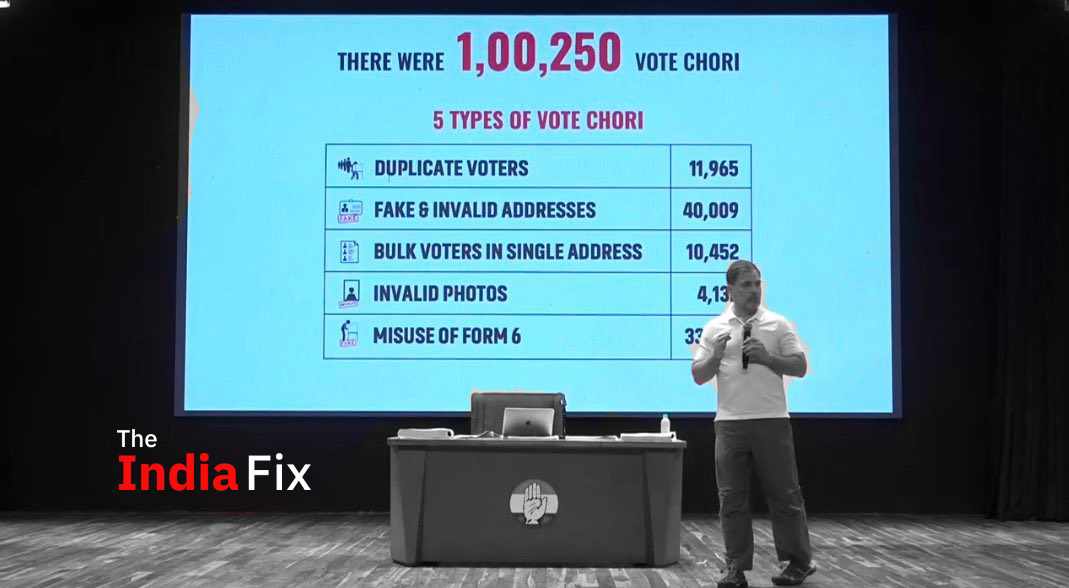
Welcome to The India Fix by Shoaib Daniyal, a newsletter on Indian politics. We’re back to regular programming after a short break.
As always, if you’ve been sent this newsletter and like it, to get it in your inbox every week, sign up here (click on “follow”).
Have feedback, interesting links or think I am wrong? Write to me: theindiafix@scroll.in
India is a “union of states”, according to its Constitution. But its states – many of them bigger than some countries – often have to bend the knee to the Centre. The latest example: on Thursday, the Union government accepted the report of a high-level committee headed by former President Ram Nath Kovind recommending that India should hold elections for the Centre, states and even local bodies at the same time.
The idea is not new. Till 1967, India did in fact have simultaneous elections for the Lok Sabha and state legislatures. But then, election patterns diverged as various state Assemblies and the Union Parliament were dissolved at different times. The idea was brought back into play in 1999, when the Union government’s Law Commission of India argued that Central and state elections should be held together.
Modi obsession
The idea has been particularly popular with Narendra Modi. After his thumping victory in 2019, one of the first things the prime minister did was call for an all-party meet on simultaneous elections.
Why is the idea so popular with the BJP? Research shows that simultaneous elections would end up helping national parties more than state parties. If elections for Central and state elections coincide, campaigning for both would also coincide. The BJP hopes that emotive, national issues, such as national security or Modi’s persona, on which it has little competition, will drown out staid, bread-and-butter issues such as jobs – on which the Hindutva party is much weaker.
If the benefits are so clear cut, why has the BJP struggled to implement simultaneous elections? That is because coordinating elections for a continent-sized country such as India is not easy. In fact, it might be impossible.
Take a look at the report of the Kovind committee, which recommends that all elections in India take place at the same time. What happens, though, if the ruling party loses its majority and the legislature is dissolved before it completes its five-year term? “Fresh elections may be held to constitute the new House” but this newly elected legislature will not have a full, five-year term, the report recommends. Its tenure “will be only for the unexpired term” of the previous legislature. So if a state assembly is dissolved after two years, the next elected assembly will last only for another three years.
Pound foolish
Why is the report so keen to do away with the current system? It cites a research paper by two economists who claim that “perennial elections increase uncertainty for all economic agents, this can directly affect choices and decisions and bear on macroeconomic outcomes like economic growth or indirectly through intermediate channels such as investment”.
The paper also highlights purported bumps such as politicians being in “permanent campaign mode” and the impact of the model code of conduct that limits policymaking in the lead-up to elections. Oddly enough, the Kovind committee paper does not calculate whether this new scheme would reduce the number of polls. If the lifetime of legislatures is curtailed because of midterm elections, it is possible that the number of elections for a particular state could actually increase.
Kovind also cites a popular argument for simultaneous elections: cost. Again, it is not clear how cost would fall if some legislatures have shorter terms that the committee envisages. Moreover, the actual amount of money spent on elections is actually quite small in India. To pinch pennies on a function as critical to democracy as elections would be foolish.
However, most starkly, the report lays out a list of constitutional amendments that simultaneous elections would require – the numbers of legislative votes for which the BJP simply does not have. Modi was unable to implement this move in his second term, when he had a solid majority. Given that almost every opposition party opposes simultaneous elections, it is unlikely that the BJP will be able to carry it through in Modi’s third term.
Brave face
Modi’s third term has, till now, been a study in rollbacks. On August 20, his government was pressured to cancel an advertisement issued by the Union Public Service Commission for the appointments of joint-secretary-level officers and other key positions through a lateral entry process. Critics pointed out that these lateral entry candidates would bypass caste quotas.
Earlier, the government withdrew the second draft version of the Broadcasting Services (Regulation) Bill, 2024, a proposed law aimed at regulating the media, including social media. After that, the Waqf bill was sent to a Joint Parliamentary Committee – the first time this had happened in almost five years. Then on August 6, the Modi government rolled back its proposal to remove indexation benefits on long-term capital gains tax.
Given how weak this government is, the chances that it can implement a move as wide-ranging as simultaneous elections seems slim. However, by putting on a brave face and accepting the Kovind committee’s report, the BJP would hope to at least pretend that it is moving ahead with its policy programme. It is not much. But it is preferable to a public, humiliating rollback on a policy it has long championed.





















Write a comment ...